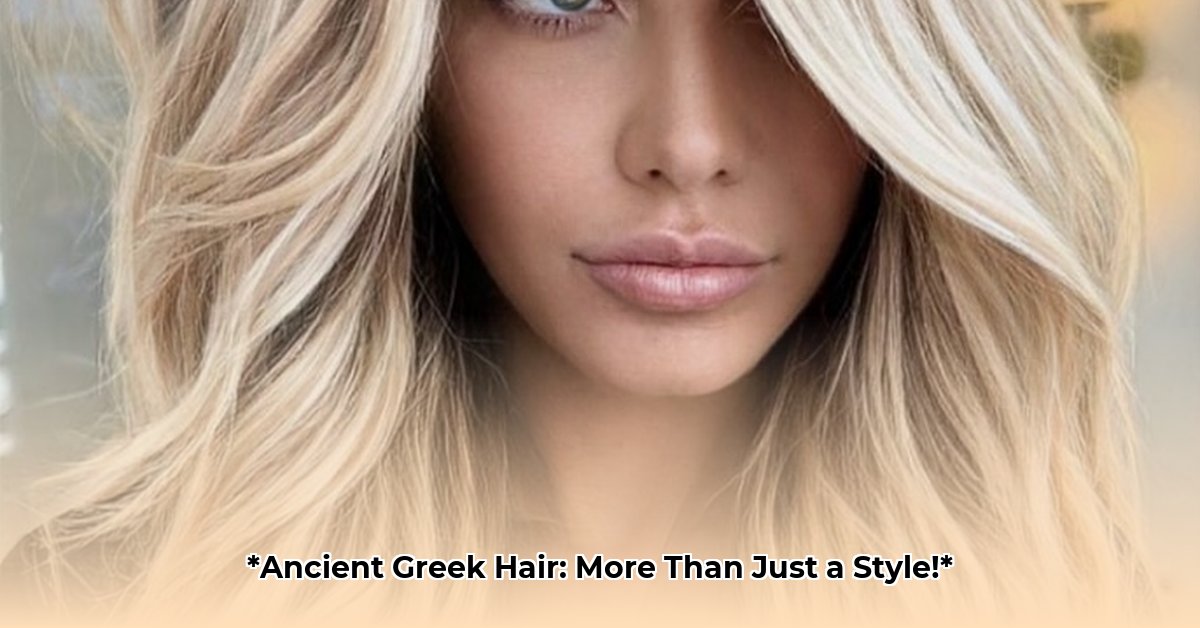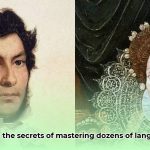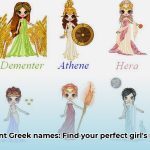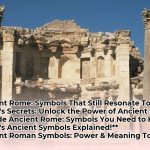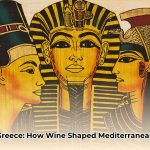Ever wondered what it truly meant to wear your hair in ancient Greece? It was much more than a fleeting fashion choice. In this sophisticated society, your hair in ancient Greece, known as the kóme (κόμη), served as a powerful visual declaration, communicating your social standing, deepest beliefs, and even your political alignment. We’re not merely exploring ancient haircuts; we’re delving into a surprisingly intricate language of styles that revealed everything from a person’s identity and wealth to their religious devotion. Join us as we unravel the captivating world of ancient Greek hairstyles—what they looked like and why they held such profound cultural weight.
The ancient Greeks believed hair was intrinsically linked to one’s personality, vitality, and even divine favor. From the meticulous care they afforded their locks to the elaborate rituals involving hair, every strand held meaning. Our understanding of these practices comes primarily from rich archaeological finds, detailed literary works like Homer’s epics, and abundant artistic depictions on sculptures, pottery, and wall paintings.
Hair as a Social Barometer: Decoding Identity in Every Strand
In ancient Greek society, hair was a primary identifier, clearly delineating an individual’s place within the societal framework. It broadcast crucial details about a person’s life at a mere glance, serving as an original, deeply ingrained resume.
One of the most striking examples of this societal encoding was the distinction in women’s hair. While free women cultivated long, lustrous locks, meticulously styled into elaborate braids, intricate curls, or embellished with sophisticated accessories, enslaved women were often compelled to wear their hair short. This practical choice, likely for hygiene and ease of management during demanding labor, also functioned as a visible marker of their subjugated status, allowing for immediate social discrimination.
For men, hair also communicated distinct messages. Early Homeric heroes were often depicted with long, flowing hair and full beards, symbolizing strength, masculinity, and warrior prowess. As society evolved, so too did these ideals, with significant shifts occurring through different historical periods.
Rituals Woven into Strands: More Than Just an Aesthetic Choice
Beyond mere aesthetics, hair carried profound symbolic and spiritual weight. Hair rituals in Greece were multi-layered and essential expressions of grief, devotion, submission, or rites of passage. The dedication of hair to deities or the deceased was a common practice, underscoring a strong belief in the vital power and sacredness held within each strand.
A poignant illustration of this is found in Homer’s Iliad (Book 23), where Achilles, overcome with grief for his fallen friend Patroclus, performs a solemn act of mourning by cutting off his hair and offering it. This deeply moving gesture symbolized his profound sorrow and devotion to their bond, highlighting how intimately hair was tied to powerful emotions and pivotal life events.
Religious ceremonies often incorporated hair offerings. Teenagers, upon reaching puberty, would dedicate locks of their hair to gods like Hercules, marking their transition into adulthood. Brides, as part of their wedding ceremony, would cut their hair and offer it to goddesses such as Artemis or Athena, symbolizing submission to their husbands and the start of a new life phase. These acts were not just symbolic; they were deeply rooted in a belief system where hair served as a conduit between the mortal and divine realms.
Women’s Diverse & Evolving Styles: A Journey Through Eras
Greek women’s hair showcased immense variety, with styles continually evolving across different historical periods, reflecting changing aesthetics and societal norms.
- Minoan Period (c. 3000-1100 BC): Early depictions, particularly from wall paintings and pottery, show dancers with shoulder-length black hair. Aegean art often portrays women with single or double plaits.
- Archaic Period (c. 1100-480 BC): Women typically wore long, free-flowing hair, often secured with decorative bands or coronets (small crowns or headbands). Maidens (kore) are depicted with numerous braids, sometimes adorned with coronets. Towards the end of this period, hair began to be tied back into a bun.
- Classical Period (c. 480-323 BC): A popular choice was the “Knidian hairstyle,” a graceful bun or knot at the nape of the neck, famously inspired by Praxiteles’ statue of Aphrodite. Simplicity often reigned, allowing the elegance of the silhouette to be the focal point.
- Hellenistic Period (c. 323-31 BC): This era marked a significant embrace of complexity and sophistication in Hellenistic hairstyles. Styles became more intricate and sculptural. Examples include:
- Peponoeidis (melon-like): Hair was divided into deep, parallel grooves resembling a melon’s segments, often with curls framing the forehead.
- Tettix: Curls were left hanging freely around the forehead in the shape of knots or bell clappers.
- Lambadion: A type of bun with loose ends, conjuring images of torch flames or a horse’s tail.
- Herakleion Amma (knot of Hercules): Associated with good fortune and love, where all hair was brushed forward to form a bow or butterfly shape.
These elaborate styles were often seen on figurines from sites like Amfissa, which offer a rich visual record of the era’s hairdressing.
Men’s Changing Cuts: From Heroic Locks to Military Precision
Greek men’s hair also underwent striking transformations, reflecting shifts in ideals of masculinity and practicality.
- Homeric & Archaic Periods: Long hair and full beards were revered symbols of strength, honor, and manliness, embodying the ideal warrior image. Homer frequently referred to the Achaeans as “long-and-thick-haired” (karēkomóōntes Akhaioí). This tradition was upheld by Spartans for centuries, who took great pride in their long hair, meticulously caring for it before battle. Spartan boys would grow their hair long once they reached puberty.
- Classical Period: A significant shift occurred towards shorter, more practical styles. This trend is often attributed to the rising popularity of organized athletics and military discipline, as shorter hair was less cumbersome during competitions or combat. The famous Discobolus statue by Myron (c. 460-450 BC) exemplifies this “athlete” hairstyle, with ears free and hair neatly trimmed, likely held in place with hair oil. Athenian boys, in contrast to Spartans, wore their hair long through childhood, cutting it ceremonially upon puberty as a solemn act, dedicating it to a chosen deity.
- Alexander the Great’s Influence: A pivotal cultural shift occurred with Alexander the Great (356-323 BC). His preference for a clean-shaven face (unlike his father, Philip II) and wind-swept locks combed back from a central part—known as the “anastole”—revolutionized men’s fashion. This became the dominant trend, influencing other Greek and later Roman rulers across the Hellenistic world (c. 323-31 BCE) to abandon traditional facial hair for several centuries, symbolizing youth, vitality, and decisive leadership.
Divine Inspiration: Hairstyles Fit for a God (or Goddess)
Even the revered gods and goddesses undeniably influenced ancient Greek hair trends, serving as aspirational models of beauty and grace. Mortals frequently sought to emulate these divine coiffures.
- Zeus: The mighty king of the gods, typically depicted with hair aligned in an upward and then downward sweep, radiating outward to form a majestic corona of individual strands, conveying immense power.
- Hera: Zeus’ wife, of royal stature, was often portrayed with shiny, perfumed locks, frequently covered by a veil.
- Athena: The city protectress, wore a helmet, with fine curls elegantly protruding from underneath.
- Artemis (Diana): The goddess of the hunt, had tightly drawn-back, straight hair.
- Aphrodite (Venus): The goddess of love and beauty, featured a seductive charm with a graceful bun often positioned on the crown or at the nape. Her “Knidian hairstyle” was particularly influential.
- Dionysos: The god of wine, and his followers contrast sharply. Dionysos could be depicted with long hair combed back into a knot. His ecstatic followers, the maenads, famously left their hair uncombed, signaling their wild, uninhibited state during orgiastic rites.
Xanthos (Blonde Aspiration): The term xanthos (ξανθός) referred to light-colored hair more broadly, encompassing golden, reddish-gold, or light brown shades, not exclusively the modern “blonde.” However, it was highly idealized, associated with beauty and divinity, especially through figures like Aphrodite and Helen of Troy. This ideal fueled efforts to lighten hair using substances like soaps, alkaline bleaches imported from Phoenicia, mixtures of apple-scented yellow flowers, pollen, potassium salts, and even gold powder.
The Tools and Artistry of Ancient Greek Hair Care
Achieving these intricate styles required dedicated effort and a variety of tools and adornments, highlighting the sophisticated ancient Greek hair care practices.
- Adornments: Greek hair accessories were not merely ornamental but fundamental to constructing and embellishing diverse styles. These included:
- Kekryphalos (Hairnet/Caul): A common hairnet, often made of gold threads or silk, worn day and night through the Classical Period. Homer and Pausanias both mention these.
- Headbands, Diadems, Coronets: Used to hold hair in place, create specific shapes, or signify status.
- Sphendone (Sling): A type of ornamental kerchief or band due to its shape.
- Clips/Loops (Sfikotires): Used for fastening and decorating hair, sometimes made of bronze and gold spirals as seen in Amfissa figurines.
- Garlands: Made of fruit, ivy leaves, or the precious elichryson (immortality plant), believed to bring serenity.
- Hairpins: Often carved from ivory or other materials, sometimes with tiny sculptures on the ends, and dipped in perfume.
- Bun Holders: Elaborate artifacts like Hellenistic gold bun holders indicate luxurious and complex hair arrangements.
- Styling Techniques & Products:
- Dyeing and Bleaching: Common practices using ashes, henna, and even colored wax for “shrill” hairdos, as well as imported Phoenician bleaches.
- Curling and Straightening: Curling irons were used to create elaborate curls, and beeswax was employed to set and hold styles in place.
- Wigs and Hair Additions (Fenakes): Not uncommon, used to achieve greater volume, length, or dramatic flair, particularly popular in the Hellenistic period.
- Barbershops: These were popular social hubs, frequently depicted in comedies, where men would spend time having their hair and beards attended to by skilled barbers.
Influencers of the Ancient World: Coins, Statues, and the Spread of Style
In the ancient world, coins and monumental sculptures played a pivotal role in disseminating ancient Greek hair fashion and grooming standards across vast regions. Despite their small scale, coins were ubiquitous, meaning the hairstyles of prominent figures—rulers, deities, or empresses—were seen by countless individuals daily, effectively becoming the era’s definitive style guides. However, more detailed portrait statues and the elaborate styles sported by high-status individuals likely had an even more profound impact, visibly showcasing the latest trends in a compelling and aspirational manner, much like modern fashion magazines and social media.
This influence extended from Greece into Rome. Early Roman men initially wore simple, natural hairstyles, but as Roman culture absorbed Greek aesthetics, Roman hairstyles, particularly for women, became increasingly complex and ornate. Roman empresses and patrician ladies became ultimate trendsetters, with their elaborate coiffures, often involving toupees, iron wires for support, and multi-tiered curls, inspiring women across the empire. The “Flavian nest” of hair loops at the nape of the neck during the Flavian dynasty is a prime example of this increasing complexity.
Beyond Fashion: Regional Variations and Philosophical Insights
The vast variety of hairstyles across ancient Greece makes pinpointing exact periods of popularity challenging, and regional differences further complicate the picture.
- Sparta vs. Athens: Plutarch’s writings highlight distinct practices. Spartan men, proud of their long hair, meticulously braided and cared for it before battle, considering it their most affordable adornment. Spartan boys, after puberty, would let their hair grow long, in contrast to Athenian boys who cut their long childhood hair critically at puberty.
- Baldness and Philosophy: In Homer’s time, baldness was seen as a sign of ugliness. The ancient Greek physician Hippocrates was the first to report that eunuchs failed to become bald, leading to the “Hippocratic wreath” of hair encircling the back and sides of the head. Philosophers like Socrates, who was bald, even compared his looks to a Silen (a follower of Dionysos), suggesting a self-awareness regarding societal aesthetic norms. In contrast, figures like Plato sported full, unstyled hair, while Pericles was meticulously groomed, reflecting personal choices within the broader trends.
Ultimately, studying ancient Greek beauty through their hairstyles provides an unparalleled window into their society, revealing their core social values, deep religious beliefs, and sophisticated aesthetic sensibilities.
Channeling Ancient Greek Elegance Today: A Timeless Legacy
Did you know that in ancient Greece, your hairstyle spoke volumes about you? It was not just about appearance but about status, beliefs, and your integral place in society. The enduring influence of ancient Greek hairstyles continues to resonate in contemporary fashion and beauty, offering a rich source of inspiration for a timeless, elegant look.
Core Insights from Ancient Greek Hairstyles for Modern Inspiration:
- Social Signifiers: Hairstyles were distinct visual cues for social standing, age, and gender.
- Cultural Evolution: Styles dynamically evolved through periods, mirroring societal shifts.
- Ritualistic Importance: Hair possessed deep spiritual significance in religious rites and mourning.
- Mythological Influence: Iconic figures shaped aspirational aesthetics, with mortals emulating divine coiffures.
- Integral Accessories: Headbands, nets, diadems, and wreaths were essential to styling.
- Blonde Idealization: Xanthos, or light hair, was idealized, leading to early dyeing and bleaching efforts.
How to Style Like an Ancient Greek (Today)
Contemporary fashion designers and stylists frequently draw direct inspiration from these classic looks, skillfully updating them for modern audiences. Many beauty companies even craft products inspired by ancient Greek hair care, emphasizing natural ingredients and sustainable beauty.
Here’s an actionable framework to bring ancient Greek elegance into your modern look:
- The Knidian Knot: This timeless style involves parting your hair in the center, gracefully twisting it into a low, neat bun at the nape of your neck, and securing it discreetly with pins. This evokes the classical elegance of Aphrodite.
- Melon Hairstyle Adaptation: For a unique and artistic look, divide your hair into multiple sections radiating from the forehead to the crown. Gently twist each section from root to tip, then carefully pin them up to visually resemble the segmented form of a melon. This can be adapted for a half-up style too.
- Hellenistic Waves & Braids: Embrace loose, textured waves paired with a side part, allowing hair to cascade naturally, capturing the timeless essence of Greek beauty. Incorporate delicate, thin braids that frame the face or are woven into an updo for added intricate detail, reminiscent of the elaborate styles seen on ancient figurines.
- Strategic Accessorizing: Elevate any hairstyle by incorporating classic Greek hair accessories like elegant headbands, delicate gold-toned ribbons, or decorative hairpins. Wreaths made of subtle greenery or metallic leaves can provide a stunning, authentic touch for special occasions.
The Enduring Alexander the Great Influence
Alexander the Great’s hairstyle—the distinctive “anastole” of upward-swept hair from the forehead—personified power, decisive leadership, and youthful dynamism. This iconic look continues to inspire, demonstrating remarkable longevity in its appeal.
- For Men: A modern adaptation could be the “Alexander Undercut,” combining a classic undercut with longer hair on top, expertly swept back to echo the dynamic upward movement. Alternatively, embrace natural waves or curls, styling them upward with a light product for volume and fluid movement, capturing the “Macedonian Texture.”
- For Women: The “Athena Braid” translates beautifully as a sophisticated crown braid that gracefully incorporates an upward sweep of hair at the front, reminiscent of a regal diadem. Or, opt for “Hellenistic Waves,” loose, textured waves paired with a side part, allowing hair to cascade naturally while perfectly capturing the timeless essence of Greek beauty.
Ancient hairstyles were never just about fleeting trends. They were deeply intertwined with identity, power, and the compelling narratives individuals and societies told about themselves. The next time you style your hair, remember the ancient Greeks and Romans – you’re participating in a rich tradition that is thousands of years old, a testament to human expression through the enduring artistry of hair.
References
- https://greekreporter.com/2025/06/16/hairstyles-ancient-greece/
- https://thedelphiguide.com/hair-care-and-hair-styles-in-ancient-greece/
- https://etc.worldhistory.org/interviews/ancient-hairstyles-of-the-grecoroman-world/
- https://www.sciencedirect.com/science/article/pii/S0022202X15526158
- https://humanmaterialloop.com/2025/03/22/the-significance-of-hair-in-ancient-greece/
- Unearth ancient rome achievements: Engineering feats & legal legacies, examined - August 13, 2025
- Unlock ancient rome army ranks: Power, impact & legion command - August 13, 2025
- Conquer Your Exam: Ancient Greece Quiz Ace It Now! - August 13, 2025
